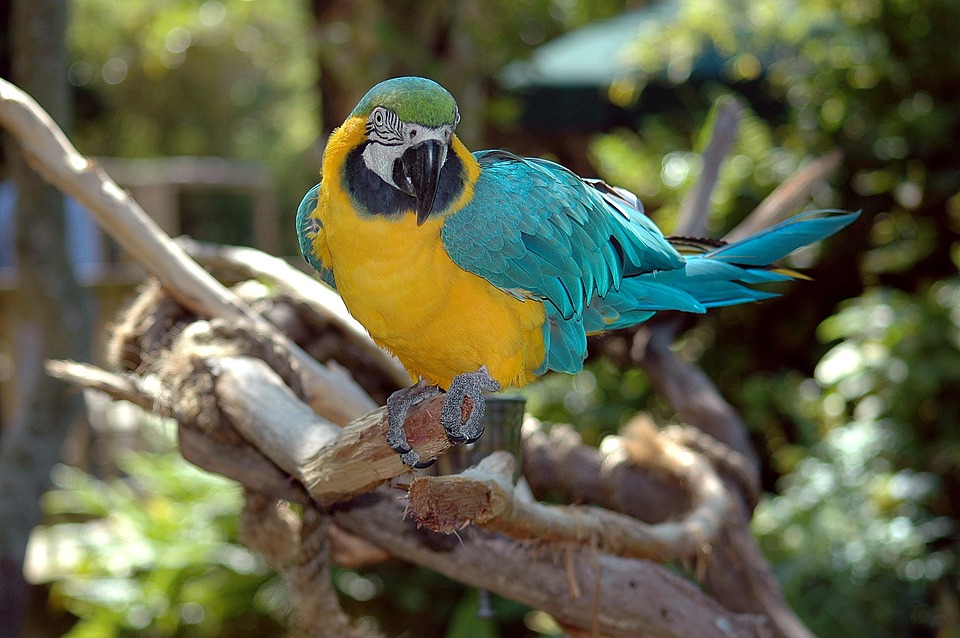Parrot training can be a delightful experience for both you and your feathered friend. However, it’s not uncommon for parrots to hesitate or show fear when faced with novel tricks. Fortunately, with the right approach and positive reinforcement techniques, you can help your parrot overcome these hurdles and build their confidence. In this article, we will explore effective methods to address hesitation or fear of novel tricks in parrot training.
Understanding Hesitation and Fear in Parrots
Before we delve into the training techniques, it’s crucial to understand why parrots may exhibit hesitation or fear when introduced to new tricks. Parrots are intelligent creatures with unique personalities, and just like humans, they can experience fear or uncertainty in new situations. This hesitation could stem from a lack of trust, past negative experiences, or simply the fear of the unknown.
It’s important to approach training with patience, empathy, and respect for your parrot’s emotions. By using positive reinforcement methods, you can create a safe and encouraging environment to help your parrot overcome their fears and hesitation.
Building Trust and a Positive Bond
Establishing a strong bond and trust with your parrot is the foundation of successful training. Here are some strategies to strengthen your bond:
1. Spend quality time together: Regularly engage in activities that your parrot enjoys, such as gentle head scratches, interactive play, or simply talking to them. This helps build a positive association with your presence.
2. Respect personal space: Allow your parrot to dictate their comfort level and personal space boundaries. Avoid forcing interactions or invading their personal space, as this may trigger fear or anxiety.
3. Offer favorite treats: Use treats that your parrot loves as positive reinforcement during training sessions. This helps create a positive association with training and encourages their willingness to try new tricks.
Gradual Exposure and Desensitization
When introducing a new trick, it’s essential to take a gradual approach to help your parrot feel comfortable and confident. Here’s how you can do it:
1. Observe and identify triggers: Pay close attention to your parrot’s body language and behavior to identify triggers that may cause hesitation or fear. It could be a specific object, sound, or movement associated with the trick.
2. Break down the trick: Divide the trick into smaller, manageable steps. Begin with the simplest step that your parrot is comfortable with, gradually progressing to more challenging aspects.
3. Controlled exposure: Introduce the trigger element in a controlled manner. For example, if your parrot is hesitant about a new toy, start by placing it nearby without any pressure for interaction. Gradually move it closer over time, allowing your parrot to investigate at their own pace.
4. Positive reinforcement: Reward your parrot with treats, praise, or their favorite toy whenever they show even the slightest interest or attempt at the trick. This positive reinforcement helps build confidence and encourages further progress.
Frequently Asked Questions (FAQs)
1. How long does it take for a parrot to overcome fear or hesitation?
The timeframe varies for each parrot. Patience is key, as it may take days, weeks, or even months for your parrot to fully overcome their fear or hesitation.
2. What if my parrot refuses to participate in training sessions?
If your parrot refuses to participate, it’s crucial to respect their boundaries. Take a step back, evaluate the training environment, and ensure there are no external factors causing stress. Try again later or modify the approach to make it more enticing for your parrot.
3. Can I use punishment to address hesitation or fear in parrot training?
No, punishment should never be used in parrot training as it can damage the trust and bond between you and your parrot. Positive reinforcement is the most effective and ethical method to address hesitation and fear.
Remember, every parrot is unique, and progress may vary. Be patient, consistent, and always prioritize your parrot’s well-being. With positive reinforcement and a nurturing approach, you can help your parrot overcome their hesitation or fear and enjoy a rewarding training journey together.









